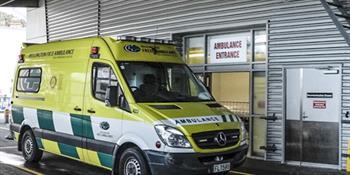Student behaviour in New Zealand classrooms has hit a new low, an Education Review Office report reveals.
The country’s ranking on an OECD scale has been among the worst for 20 years, but the report says it’s getting worse. Prolonged periods away from the classroom due to pandemic lockdowns triggered a further decline, which educators have been unable to arrest.
Last year an OECD survey of 15-year-olds gave New Zealand the worst score among developed countries, and one of the worst of the 81 nations and territories covered.
Ministry of Education figures show schools stood down (suspended) pupils 25,167 times in 2022—representing almost 3.3 stand-downs for every 100 students—the most in more than 20 years of records.
Behaviour issues are “particularly severe” in larger schools and poorer communities. At least 40 percent of teachers from schools in low socioeconomic communities observe behaviour such as damaging or taking property at least every day, compared to 23 percent from schools in wealthier areas.
A Quarter of All Principals Witness Daily Harm
ERO Education Evaluation Centre head Ruth Shinoda said the Office is “extremely concerned that a quarter of principals told us they are seeing students physically harm others, and damage or take property at least every day.“Disruptive classroom behaviour is a significant and persistent issue in New Zealand. Over the last 20 years [it] has been amongst the worst in the OECD. But we also know it is getting worse, with over half of teachers saying all types of disruptive behaviour had become worse in the last two years.”
Not only does it cause problems for students while they’re at school, but it’s also associated with negative life outcomes, the report says.Most schools discipline students through a stand-down (suspension), but the report warns that multiple stand-downs are “linked to other longer-term outcomes such as unemployment, offending, and poor health.”
Exclusion (expulsion) is a last resort for those who don’t respond to less serious measures.
The younger a student is at the time they are first stood down or excluded, the more likely they are to receive a benefit, have a lower income, have a greater number of admissions to emergency departments, offend, or receive a custodial sentence.
Teachers Leaving, Less People Interested in Teaching
The problem is affecting teacher recruitment and retention, with half of all educators saying it has a large impact on their intention to stay in the profession, and less than half of new teachers (45 percent) feel capable of managing negative behaviours in the classroom in their first term.
Chair of the Secondary Principals’ Council Kate Gainsford confirmed that “Principals and teachers have reported a significant increase in behavioural incidents, and issues in the classroom and school grounds have increased significantly over the last few years. Our schools are a mirror of our communities, and the issues being experienced in our communities are brought to school by young people every day.”
And as the scale and complexity of social issues had increased, schools were expected to do more without a corresponding increase in resources, she said.“It’s not all about money for schools, it’s about service and a workforce to provide the necessary service.
‘Alternative’ Education Also Failing
The Ministry of Education funds just 2,000 places in “alternative education” each year, representing just 1 percent of all learners. Young people can enter the system between Years 9 and 11 (around 13 to 16 years old) and stay until Year 13 (up to 19 years old), though not all do—people remain in alternative education for between three weeks to over three years.The objective is to provide them with a quality education while supporting them back into education, training, or work. They’re taught by educators—who do not have to be registered teachers—in small groups with a ratio of one educator for around 10 students.
Young people might not attend every day and might not learn the New Zealand Curriculum. Instead, they have a plan that sets out their goals and the steps they are taking to achieve them.
Alternative education providers also work with the young person and their family to overcome barriers to education, which may include such things as providing clothing and transport or working towards more stable living circumstances.
While some operate out of classrooms on school sites, many are out in the community: in community houses, youth facilities, or with tertiary training providers.
More Likely to Break the Law
And at 18 years old, young people who have been to alternative education are less likely to be employed compared to other 18-year-olds nationally.At age 24, about half of former Alternative Education participants are employed compared to three in five adults in the matched comparison group.
They were also more likely to break the law: at age 24, one in seven adults who have been to alternative education had served a custodial sentence, compared to less than one in ten adults in the matched comparison group.
They were also more likely to be victims of crime, experience poor health, and receive social welfare benefits.
Education Minister Erica Stanford pointed out that the government is “already actioning” two ERO recommendations on improving student behaviour by banning mobile phones in classrooms and looking at how to improve teacher training.
“Making sure every child, no matter where they live in New Zealand, receives a world-class education is a priority for this coalition government and is a key component of our better public services approach,” she said.






